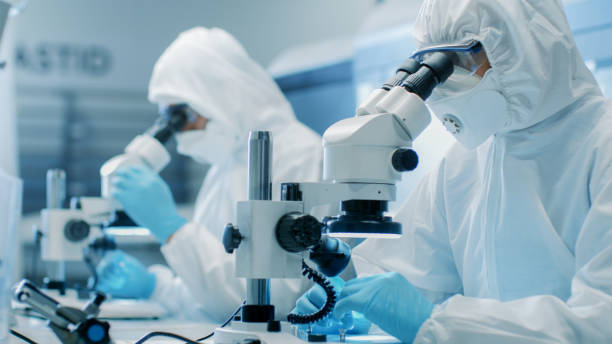In the realm of modern medicine, advancements in technology have been pivotal in reshaping diagnostics, treatment, and prevention of diseases. Among the most promising innovations is nanotechnology—a field that manipulates materials at the molecular and atomic level. Nanotechnology has unlocked unprecedented opportunities in healthcare, offering solutions that were once deemed impossible. This article delves into the transformative role of nanotechnology in modern medicine, exploring its applications, benefits, challenges, and future potential.
1. Understanding Nanotechnology in Medicine
Nanotechnology involves working with materials on a nanometer scale (one-billionth of a meter), enabling scientists to design devices, particles, and systems with precision at the molecular level. In medicine, this precision allows for the development of nanoscale devices and materials that interact with biological systems in targeted and controlled ways. This capability has revolutionized drug delivery, diagnostics, imaging, and regenerative medicine.
2. Applications of Nanotechnology in Medicine
a. Targeted Drug Delivery
One of the most impactful applications of nanotechnology is in targeted drug delivery. Traditional treatments, such as chemotherapy, often affect both healthy and diseased cells, leading to adverse side effects. Nanoparticles can be engineered to deliver drugs directly to affected tissues or cells, minimizing collateral damage and enhancing treatment efficacy.
- Nanocarriers: Liposomes, dendrimers, and polymeric nanoparticles are used to encapsulate drugs, protecting them from degradation and releasing them at the desired site.
- Cancer Treatment: Nanotechnology has revolutionized oncology by allowing precise delivery of chemotherapeutic agents to tumors, reducing toxicity and improving outcomes.
b. Diagnostics and Imaging
Nanotechnology has significantly enhanced the accuracy and speed of disease diagnosis. Nanoparticles and nanodevices are used in diagnostic tools to detect diseases at an early stage, often before symptoms appear.
- Quantum Dots: These semiconductor nanoparticles are used in imaging for their bright fluorescence and stability, aiding in the detection of cancer and other diseases.
- Nanosensors: These highly sensitive sensors detect biomarkers in blood, saliva, or urine, enabling early diagnosis of diseases such as diabetes and Alzheimer’s.
c. Regenerative Medicine
Nanotechnology has paved the way for advancements in tissue engineering and regenerative medicine. Nanomaterials can mimic the natural extracellular matrix, promoting cell growth and tissue regeneration.
- Nanoscaffolds: These structures support the growth of new tissues and organs, aiding in wound healing and organ repair.
- Stem Cell Therapy: Nanotechnology enhances the delivery and efficacy of stem cells, improving outcomes in regenerative therapies.
d. Antimicrobial Nanomaterials
Nanoparticles such as silver, zinc oxide, and titanium dioxide exhibit strong antimicrobial properties. These are used in coatings for medical devices and wound dressings to prevent infections.
- Hospital Applications: Nanotechnology reduces hospital-acquired infections by incorporating antimicrobial coatings on surgical tools and implants.
a. Precision and Personalization
Nanotechnology enables highly precise interventions, tailored to individual patients. This personalization improves the effectiveness of treatments and minimizes side effects.
b. Enhanced Disease Detection
Early detection of diseases improves prognosis and reduces the burden on healthcare systems. Nanotechnology’s sensitivity and specificity allow for the identification of diseases at their nascent stages.
c. Minimally Invasive Treatments
Nanotechnology facilitates less invasive diagnostic and therapeutic procedures. Nanodevices can navigate the body’s intricate systems without requiring large incisions or extensive interventions.
d. Cost-Effectiveness
By improving treatment efficacy and reducing hospital stays, nanotechnology has the potential to lower overall healthcare costs, despite the initial investment in research and development.
4. Challenges in Implementing Nanotechnology in Medicine
a. Safety Concerns
The interaction of nanoparticles with biological systems raises concerns about toxicity and long-term effects. Rigorous testing and regulation are necessary to ensure safety.
- Biocompatibility: Ensuring that nanoparticles do not trigger adverse immune responses or accumulate in harmful ways.
- Environmental Impact: Addressing potential risks of nanoparticle contamination in the environment.
b. Regulatory and Ethical Issues
Regulating nanotechnology in medicine is complex due to the novelty and diversity of nanomaterials. Establishing universal standards for safety, efficacy, and manufacturing practices is crucial.
- Ethical Dilemmas: Issues related to privacy, genetic modification, and equitable access to nanomedicine need careful consideration.
c. High Development Costs
The development and commercialization of nanomedicine require significant investment. Balancing affordability with innovation is a critical challenge.
d. Scalability
Scaling up production of nanomaterials while maintaining quality and consistency poses a significant technical challenge.
5. Future Prospects of Nanotechnology in Medicine
The future of nanotechnology in medicine is incredibly promising, with ongoing research aimed at overcoming current limitations and exploring new possibilities.
a. Advanced Drug Delivery Systems
Future nanocarriers may incorporate artificial intelligence to release drugs in response to real-time physiological changes, optimizing treatment outcomes.
b. Smart Implants and Devices
Nanotechnology will enable the development of smart implants that monitor health metrics and deliver treatments autonomously. For example, insulin-delivering nanodevices for diabetic patients.
c. Gene Therapy
Nanoparticles may play a crucial role in delivering genetic material to specific cells, advancing treatments for genetic disorders and cancers.
d. Integration with Artificial Intelligence
Combining nanotechnology with AI will revolutionize personalized medicine by analyzing vast datasets to predict and treat diseases with unparalleled precision.
e. Global Health Impact
Nanotechnology can address global health challenges by developing cost-effective diagnostics and treatments for diseases like malaria, tuberculosis, and HIV/AIDS.
Conclusion
Nanotechnology stands at the forefront of a medical revolution, promising to reshape the landscape of healthcare. Its applications in targeted drug delivery, diagnostics, regenerative medicine, and antimicrobial solutions highlight its transformative potential. However, addressing challenges related to safety, ethics, and cost is essential to fully harness its benefits.
As research progresses, nanotechnology is poised to make medicine more precise, personalized, and effective, ultimately improving quality of life and extending human longevity. The integration of nanotechnology into mainstream healthcare will not only redefine how we treat diseases but also pave the way for innovations that were once confined to the realm of science fiction. The future of medicine, undoubtedly, lies in the nanoscale.







Leave a Reply